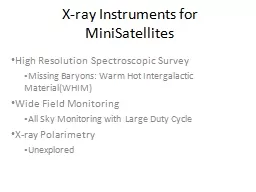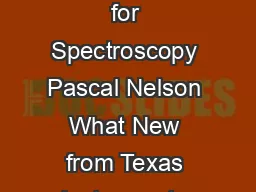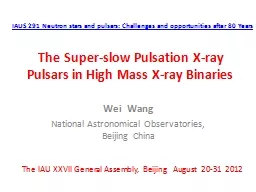PPT-X-ray Instruments for
Author : kittie-lecroy | Published Date : 2016-08-11
MiniSatellites High Resolution Spectroscopic Survey Missing Baryons Warm Hot Intergalactic MaterialWHIM Wide Field Monitoring All Sky Monitoring with Large Duty
Presentation Embed Code
Download Presentation
Download Presentation The PPT/PDF document "X-ray Instruments for" is the property of its rightful owner. Permission is granted to download and print the materials on this website for personal, non-commercial use only, and to display it on your personal computer provided you do not modify the materials and that you retain all copyright notices contained in the materials. By downloading content from our website, you accept the terms of this agreement.
X-ray Instruments for: Transcript
Download Rules Of Document
"X-ray Instruments for"The content belongs to its owner. You may download and print it for personal use, without modification, and keep all copyright notices. By downloading, you agree to these terms.
Related Documents














